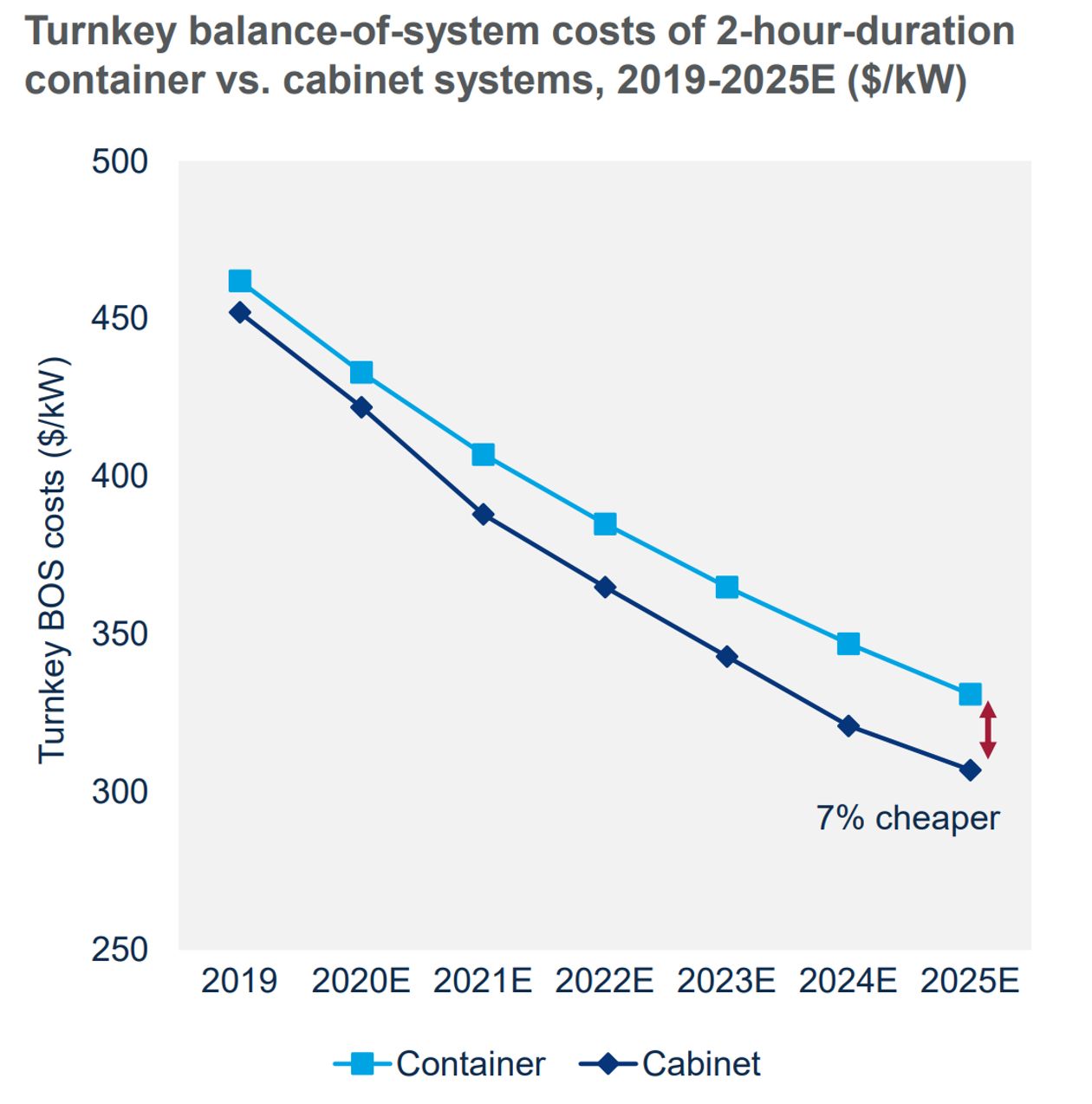This is an excerpt from the full Q3 2020 U.S. Energy Monitor report.
Cabinets are all the rage today. For energy storage systems, anyway.
Traditionally, cabinet-based energy storage enclosures have been more popular for smaller front-of-meter units (i.e., those with around 10 megawatt-hours of capacity). But as the market comes to realize the benefits of cabinets over containers, there is growing interest in using this system housing for larger projects as well.
Each individual cabinet comes fitted with a limited number of battery racks, along with an HVAC and fire detection and suppression system, thus enhancing their safety profile. These enclosures are designed to be completely walk-free and can only be accessed externally, helping to ensure the safety of the personnel installing or servicing these systems.
A couple of years ago, the initial wave of interest in these enclosures was spurred by companies seeking to achieve compliance with NFPA 855 standards, but now most vendors have come to recognize the additional benefits offered by cabinet enclosures.
Cabinets are usually shipped preloaded with batteries, as most of the assembly and wiring work happens in the factory. Prefitting these cabinets in a factory, a more automated and controlled environment, leads to lower integration risks, higher quality, lower engineering costs and faster installation and commissioning.

Source: Q3 2020 U.S. Energy Storage Monitor
In some cases, assembling a container on site can take as much as 50 percent longer compared to installing a fully preloaded cabinet, depending on the size of the project. As a result, cabinets are becoming an obvious choice, particularly for projects with tight commissioning timelines. The biggest challenge with cabinet enclosures pertains to shipping.
Since these units come prefitted with battery racks, it can sometimes be more expensive to ship these heavier cabinets compared to other containers, depending on the location of the project site.
Several system integrators are already beginning to standardize their cabinet-based products, making them more readily scalable. The industry is increasingly moving from a bespoke approach to products to a more standardized paradigm.
***
The full U.S. Energy Storage Monitor report provides a deeper dive into battery storage trends and costs. Download the free executive summary or purchase the full report here.




